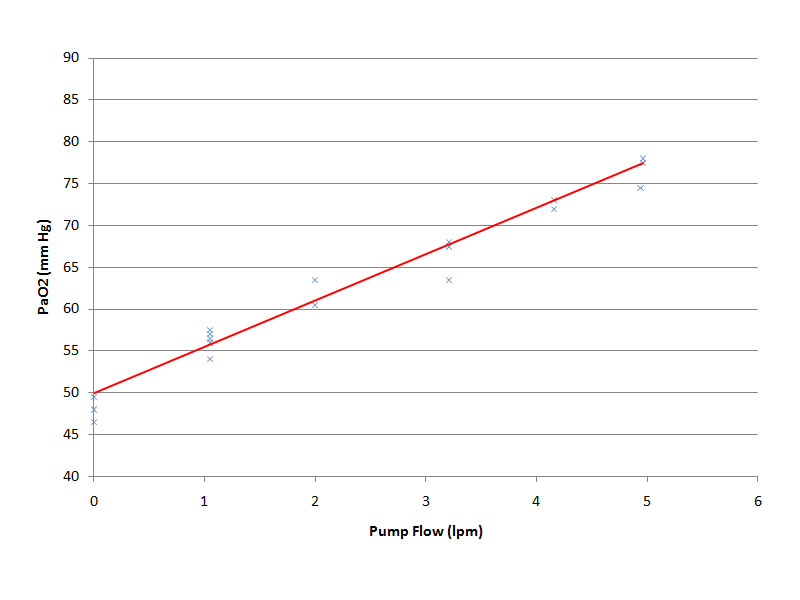ECMO blood flow rate and PaO2.

The data shown above are from a simulated patient with severe respiratory failure and an oxygen consumption of ~200 ml/min on stable VV ECMO. The patient has been completely paralysed with pancuronium and is ventilated on 100% oxygen with a tidal volume of 400 mls at 10 breaths per minute. The VV ECMO system has been set at a constant blood flow rate of 5.0 lpm and ‘Sweep Gas’ rate of 4.0 lpm. The patient’s native cardiac output is about 7.5 L/min at the start of the experiment, but falls to about 5 lpm at the end(as his hypoxia and hypercarbia resolve).
Over the course of twenty minutes, the blood flow through the VV ECMO system has been increased in progressively from 0 to 5.0 lpm.
The relationship between PaO2 and ECMO blood flow has been plotted. As can be seen, the PaO2 rises progressively from under 50 mm Hg to just under 80 mm Hg as the blood flow through the artificial lung is increased.
This experiment illustrates an important principle of VV ECMO – that the efficacy of arterial oxygenation is determined in large part by the blood flow through the device.
